Follow the instructions in this section to install the Processor Neptune® Core Module. The procedure must be executed by a trained technician.
About this task
Safety information for leakage sensor module cable
S011
Sharp edges, corners, or joints nearby.
Read Installation Guidelines and Safety inspection checklist to make sure that you work safely.
- Prevent exposure to static electricity, which might lead to system halt and loss of data, by keeping static-sensitive components in their static-protective packages until installation, and handling these devices with an electrostatic-discharge wrist strap or other grounding system.
Depending on the specific configuration, the hardware might look slightly different from the illustrations in this section.
Prepare the following screwdrivers to ensure you can install and remove the corresponding screws properly.
| Torque screwdriver type list | Screw Type |
|---|
| Torx T20 head screwdriver | Torx T20 screw |
Procedure
- If you are replacing a processor and reusing the cold plate.
- Remove the processor identification label from the cold plate and replace it with the new label that comes with the replacement processor.
- If there is any old thermal grease on the cold plate, wipe the thermal grease from the bottom of the cold plate with an alcohol cleaning pad.
- If you are replacing the cold plate and reusing the processor.
- Remove the processor identification label from the old cold plate and place it on the new cold plate in the same location.
If you are unable to remove the label and place it on the new cold plate, or if the label is damaged during transfer, write the processor serial number from the processor identification label on the new cold plate in the same location as the label would be placed using a permanent marker.
- Install the processor.
 Slide the processor carrier into the rail frame.
Slide the processor carrier into the rail frame. Push the rail frame down until the blue latches lock into place.
Push the rail frame down until the blue latches lock into place. Close the retention frame.
Close the retention frame. Use a Torx T20 screwdriver to tighten the screw.
Use a Torx T20 screwdriver to tighten the screw.
Figure 1. Installing a processor
- Apply new thermal grease on the top of the processor with a syringe by forming four uniformly spaced dots, while each dot consists of about 0.1 ml of thermal grease.
Figure 2. Applying thermal grease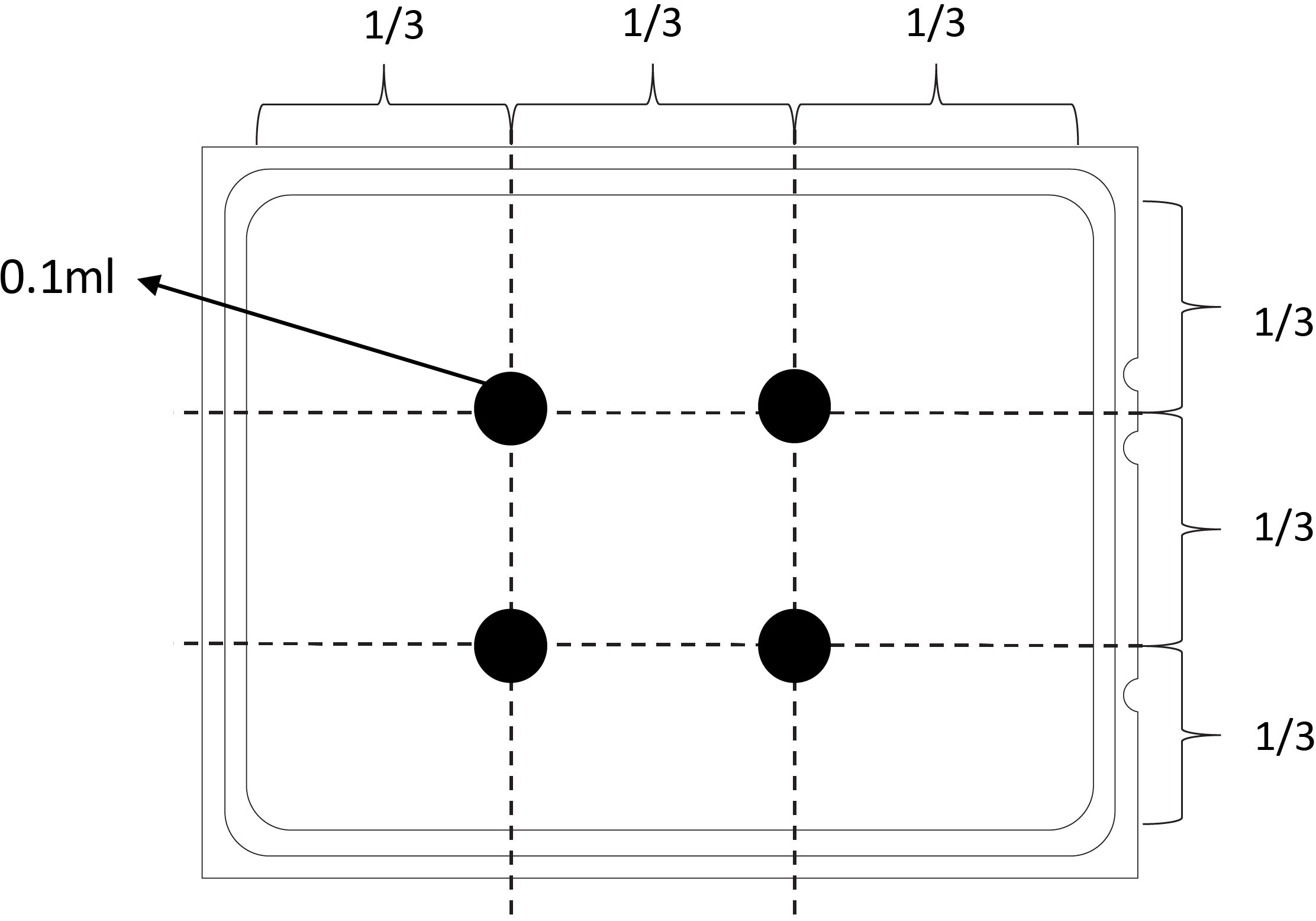
- Install the Processor Neptune® Core Module.
- Align the cold plate to the processor socket; then, carefully lower the Processor Neptune® Core Module into the chassis.
Figure 3. Place the module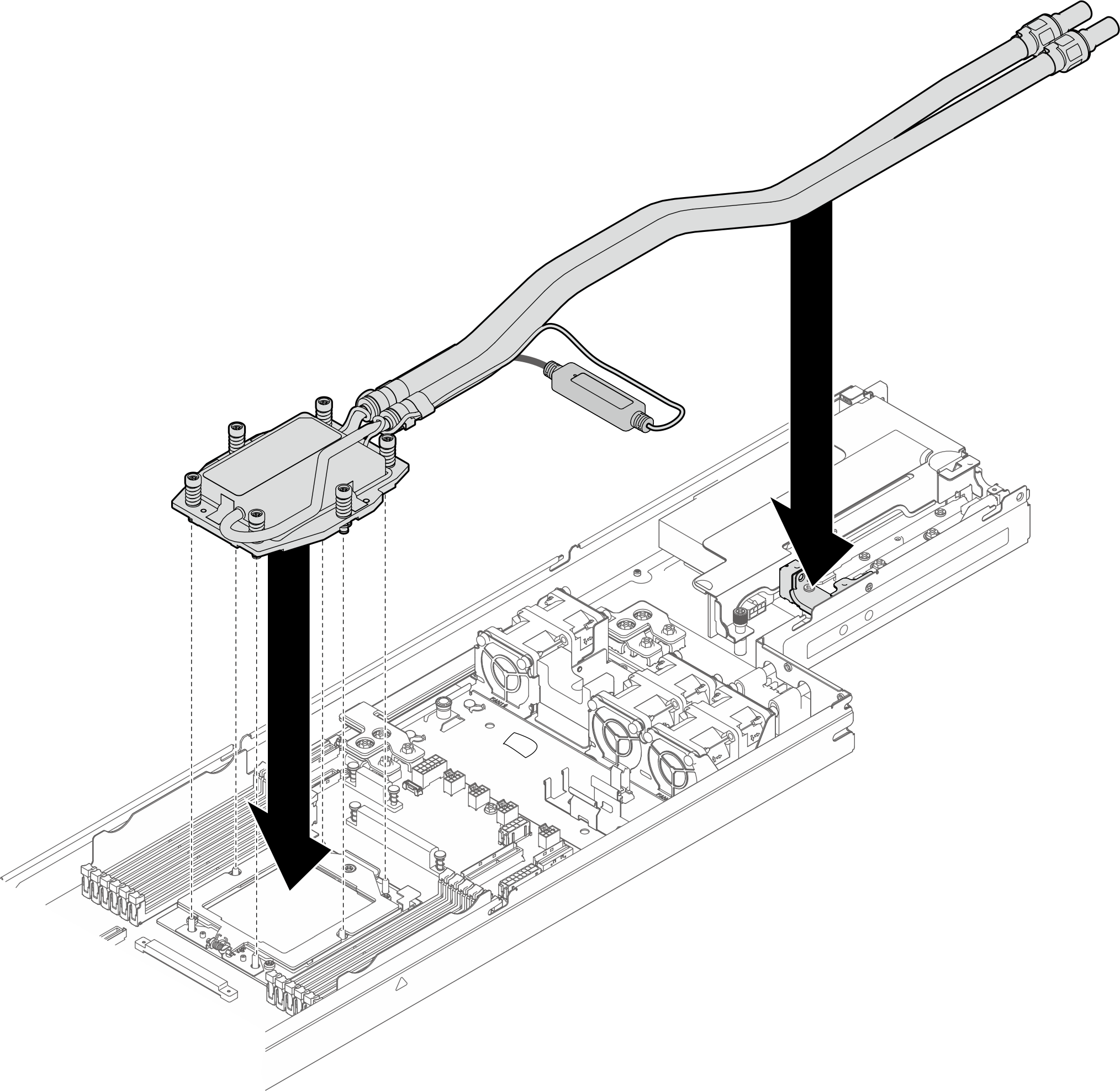
 Install the hoses to the hose holders.
Install the hoses to the hose holders.Figure 4. Installing the hoses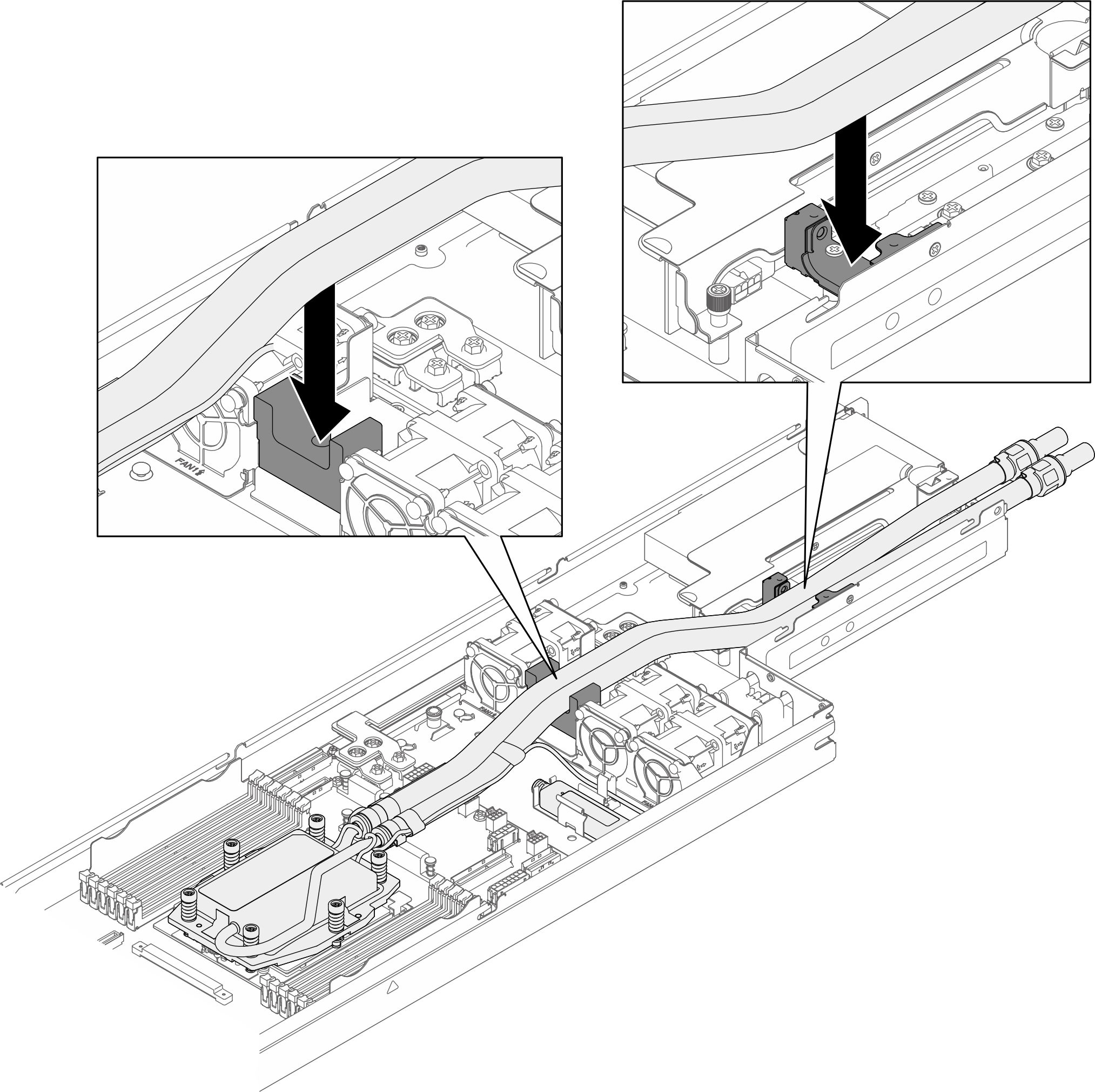
- Install the cold plate.
- Align the triangular mark and screws on the cold plate assembly with the triangular mark and threaded posts on the processor socket; then install the cold plate assembly on the processor socket.
- Fully tighten all the screws in the installation sequence shown on the cold plate assembly.
For reference, the torque required for the fasteners to fully tighten is 1.22-1.46 newton-meters (10.8-13.0 inch-pounds).
Figure 5. Install the cold plate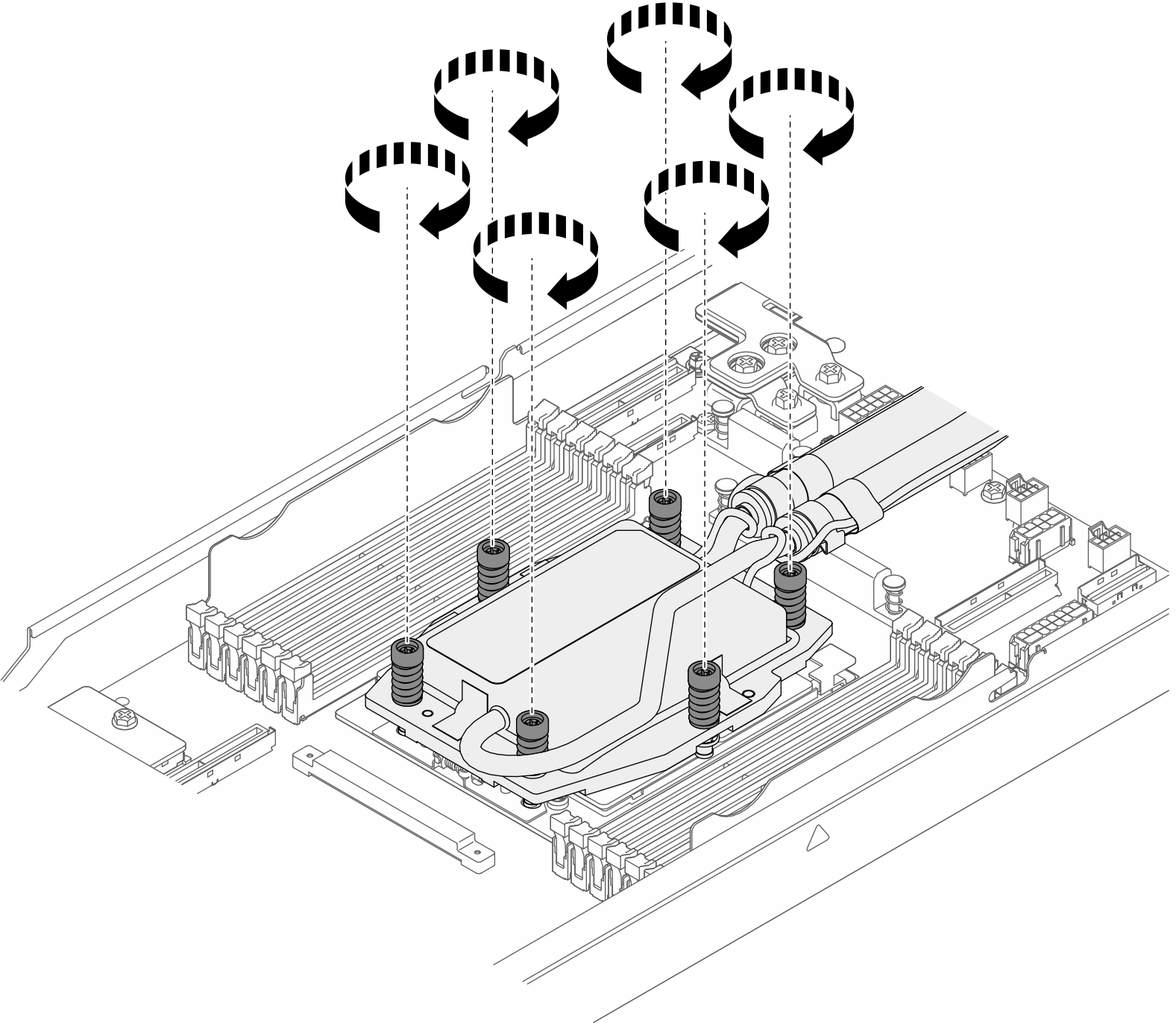
- Install the first hose cover.
 Align and install the hose cover to the slot.
Align and install the hose cover to the slot. Fasten the two screws to secure the hose cover to the chassis.
Fasten the two screws to secure the hose cover to the chassis.Figure 6. Installing the hose cover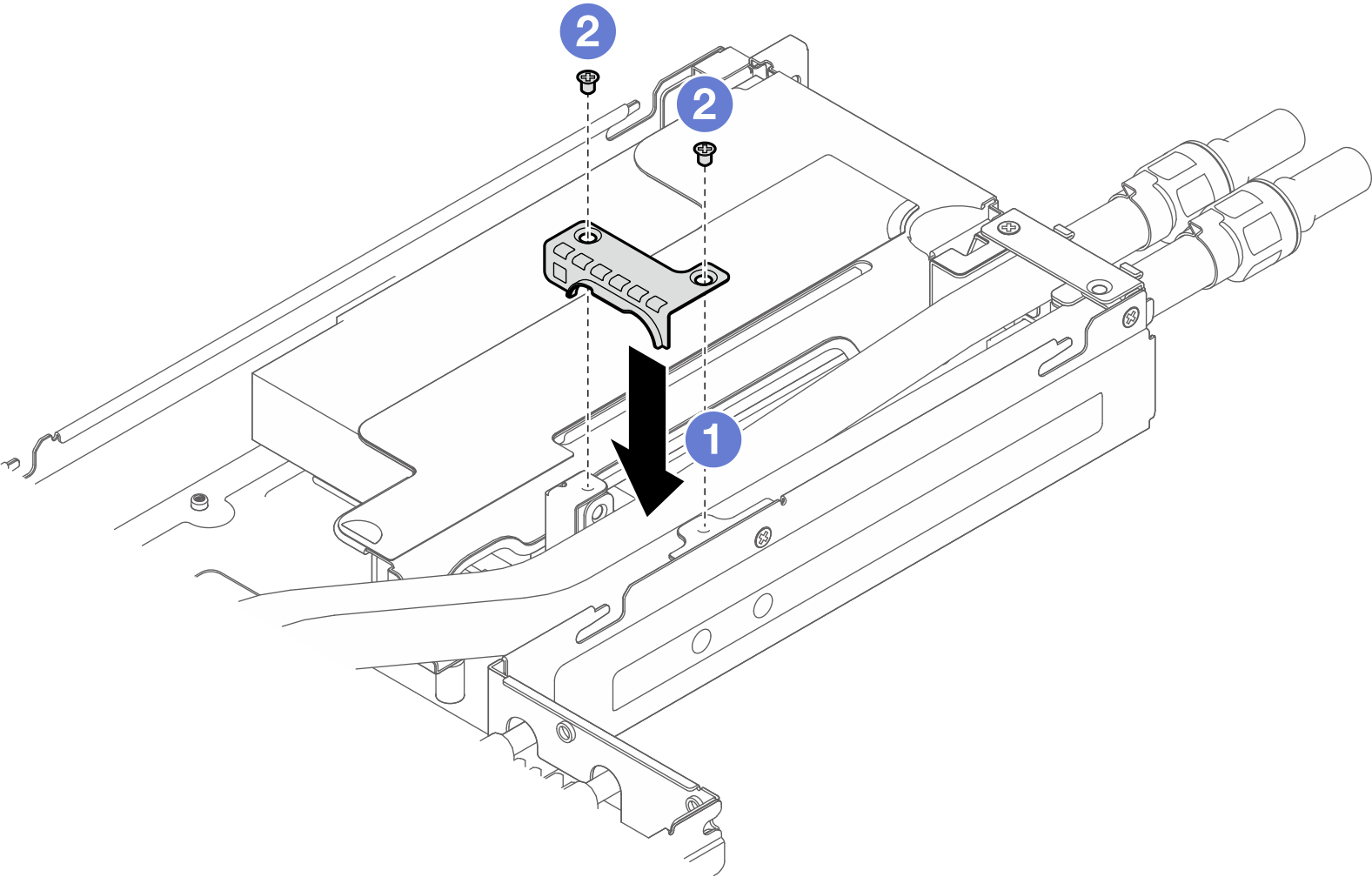
- Install the second hose cover.
 Align and install the hose cover to the opening on the rear of the chassis.
Align and install the hose cover to the opening on the rear of the chassis. Fasten the two screws to secure the hose cover to the chassis.
Fasten the two screws to secure the hose cover to the chassis.Figure 7. Installing the hose cover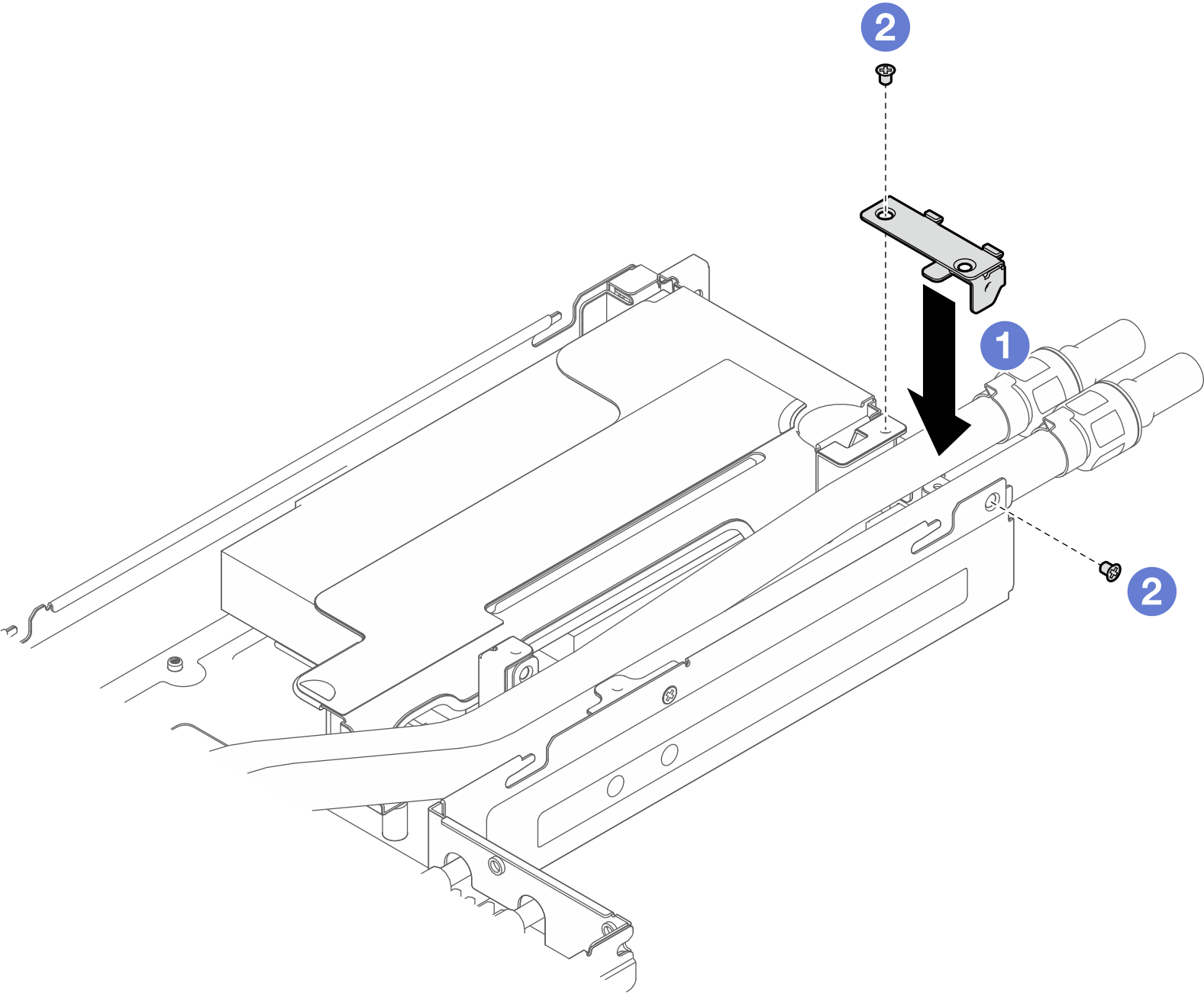
- Install the leakage sensor module to the sensor module holder.
Figure 8. Installing the leakage sensor module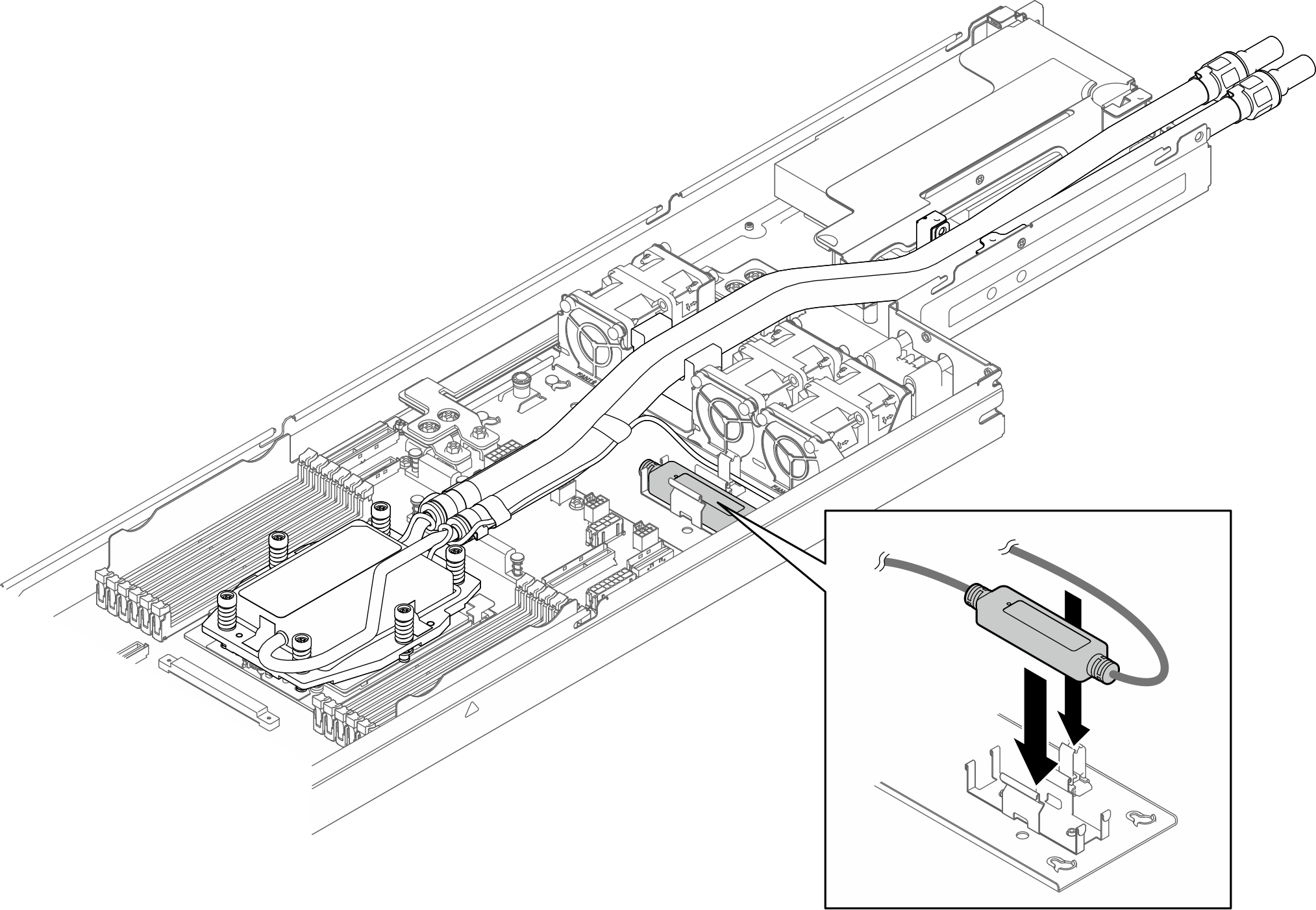
- Install the rubber air baffle onto the cold plate.
Figure 9. Installing the rubber air baffle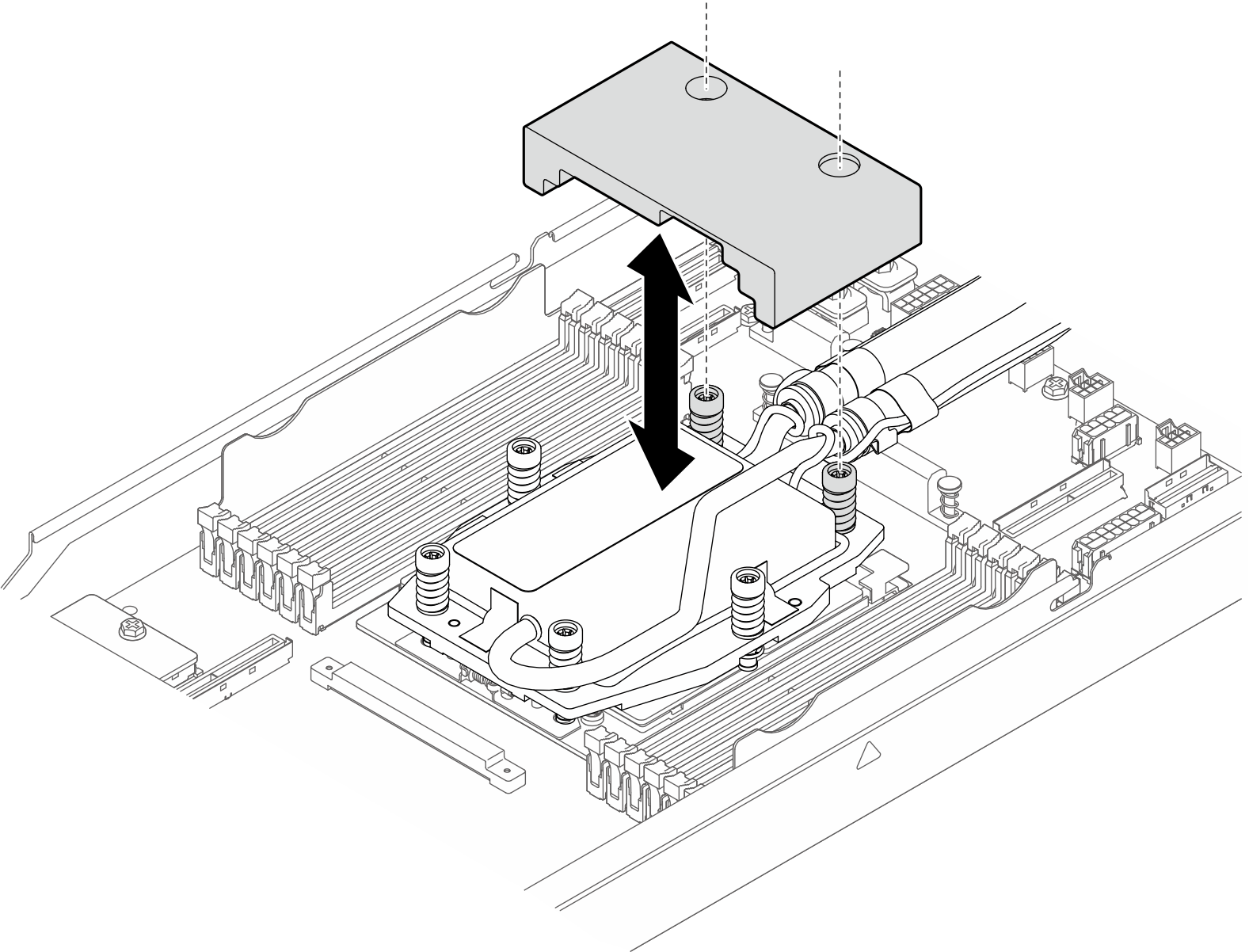
After you finish
- Connect the cable of the leakage sensor module to the connector on the system board. See Leakage sensor module cable routing.
- Install the quick connect plugs to the manifolds. See Install the manifold (in-rack system) or Install the manifold (in-row system).
- Make sure that all the required cables are routed and connected correctly; then, reinstall the top cover (see Install the top cover).
- Reinstall the node into the chassis (see Install a node to the chassis).
- Make sure that the required power supply units are installed and power cords are connected; then, power on the node (see Install a hot-swap power supply and Power on the node).
- Proceed to complete the parts replacement (see Complete the parts replacement).
Demo video














